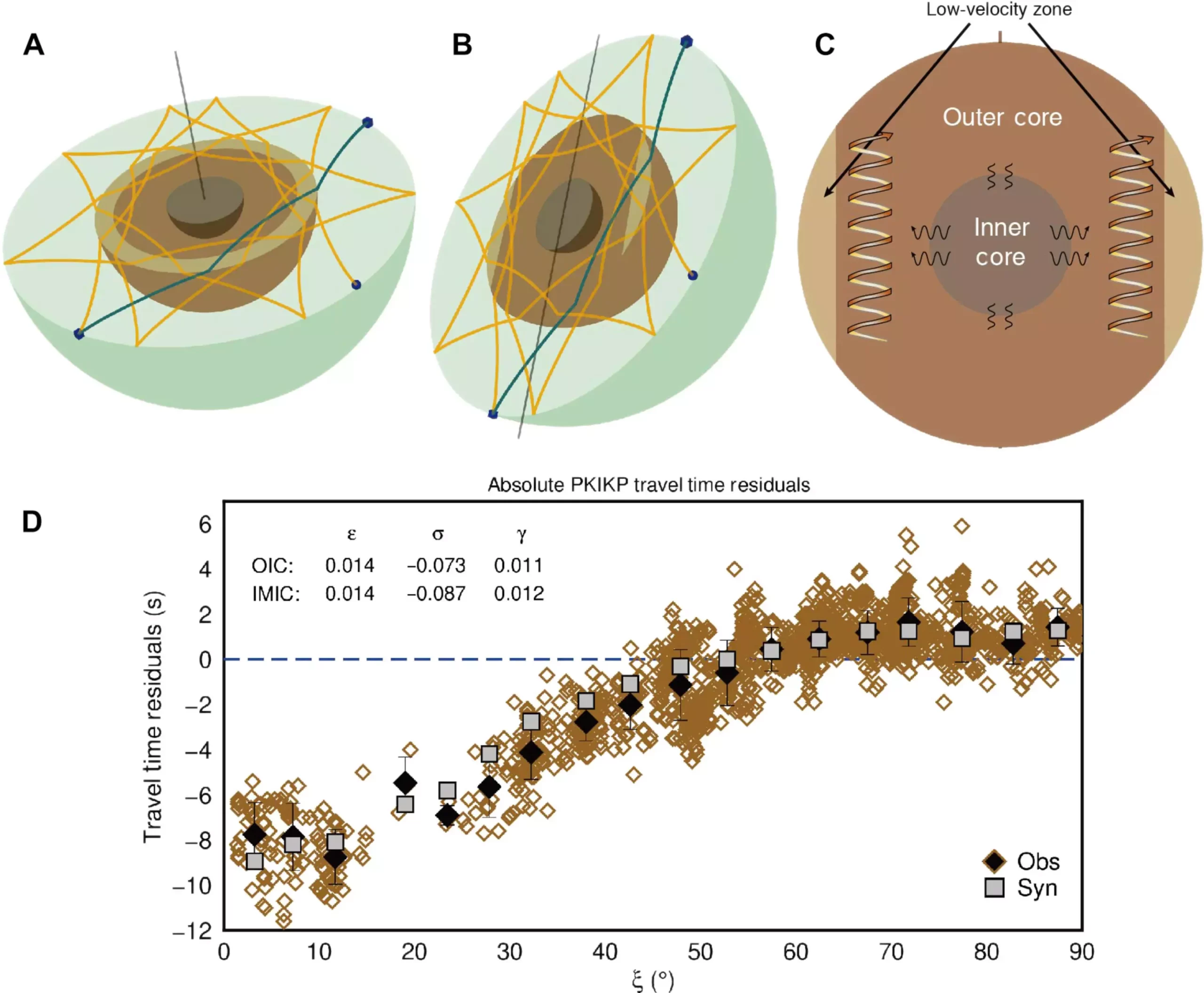Recent research conducted by scientists from The Australian National University (ANU) has revealed the existence of a doughnut-shaped region located thousands of kilometers beneath the Earth’s surface within the planet’s liquid core. This newly discovered structure, which is only present at low latitudes and runs parallel to the equator, has remained undetected until now. The Earth’s core consists of two layers: the inner core, a solid region, and the outer core, a liquid layer that surrounds the inner core. Situated at the top of the Earth’s outer core, where the liquid core meets the mantle, this doughnut-shaped region has provided valuable insights into the dynamics of the planet’s magnetic field.
Instead of employing traditional methods of seismic wave observation, the ANU scientists utilized a unique approach to make this groundbreaking discovery. By analyzing the waveforms that persisted many hours after the origin times of seismic events, rather than focusing solely on signals generated within the first hour, the researchers were able to uncover the presence of the doughnut-shaped region within Earth’s liquid outer core. This innovative technique allowed for greater volumetric coverage of the outer core and provided a more comprehensive understanding of the paths traveled by seismic waves through the Earth.
According to study co-author and ANU geophysicist, Professor Hrvoje Tkalčić, the newly discovered region has significant implications for understanding the dynamics of Earth’s magnetic field. The slower seismic waves detected within this specific region indicate a high concentration of light chemical elements, which contribute to the deceleration of wave propagation. These light elements, along with temperature variances, play a crucial role in stirring the liquid within Earth’s outer core, ultimately influencing the generation of the planet’s magnetic field. The magnetic field, in turn, acts as a protective shield around Earth, safeguarding it from harmful solar winds and radiation and creating a favorable environment for life to thrive.
Despite this groundbreaking discovery, there are still numerous mysteries surrounding Earth’s outer core that remain unsolved. Dr. Xiaolong Ma, another study co-author, emphasized the need for multidisciplinary efforts from various fields such as seismology, mineral physics, geomagnetism, and geodynamics to further unravel the complexities of the Earth’s core dynamics. Understanding the composition of the outer core, including the presence of light chemical elements, is essential for predicting potential changes in the magnetic field and comprehending how it may evolve in the future. By conducting further research and collaborating across different scientific disciplines, scientists hope to gain a more comprehensive understanding of Earth’s inner workings and the fundamental forces that shape our planet.


Leave a Reply